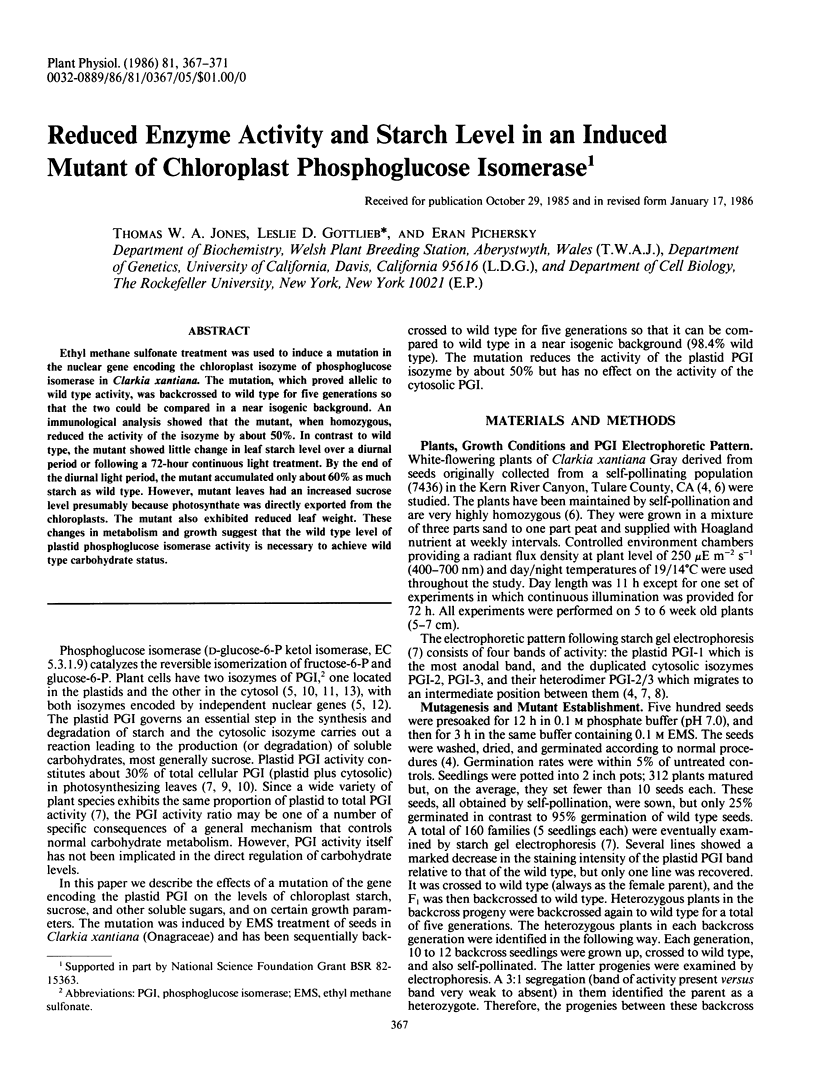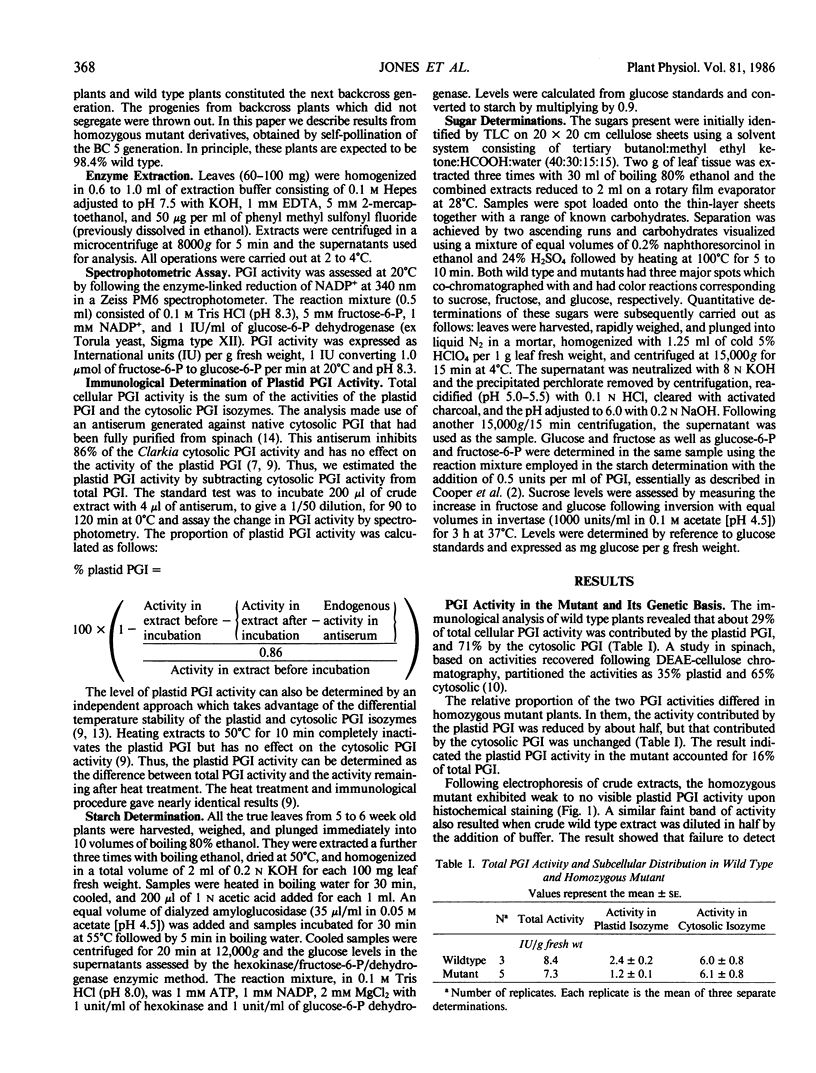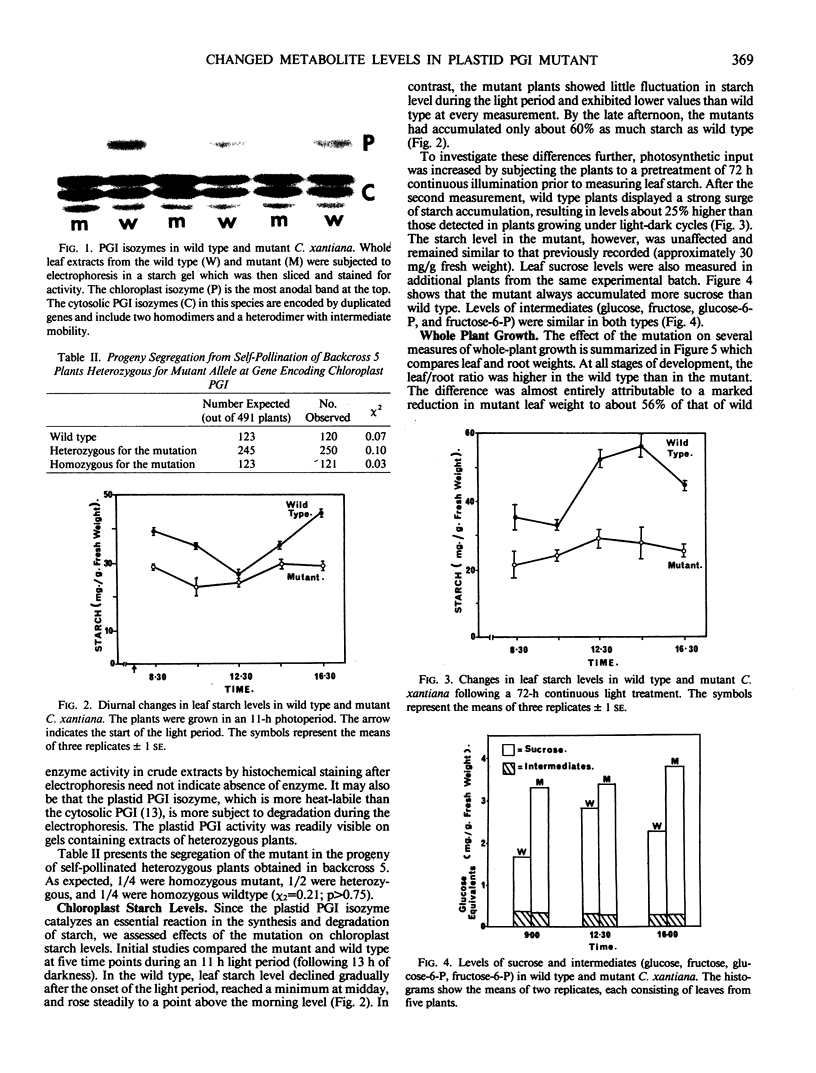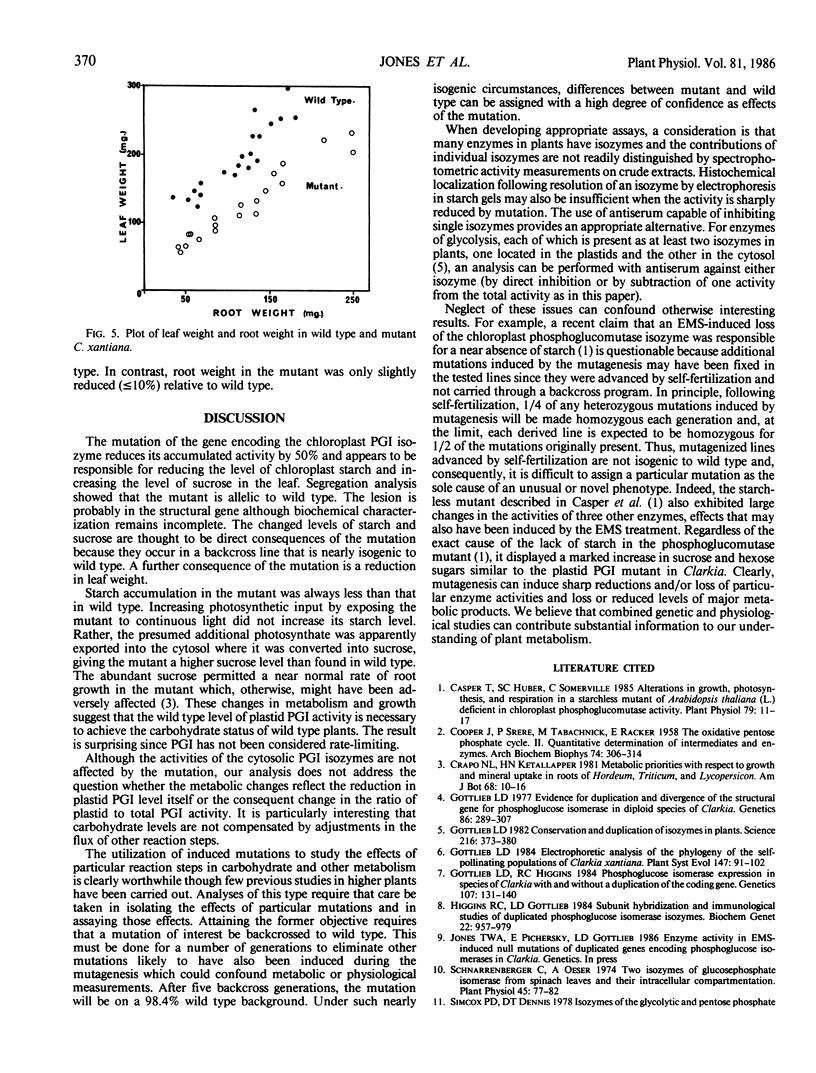Abstract
Ethyl methane sulfonate treatment was used to induce a mutation in the nuclear gene encoding the chloroplast isozyme of phosphoglucose isomerase in Clarkia xantiana. The mutation, which proved allelic to wild type activity, was backcrossed to wild type for five generations so that the two could be compared in a near isogenic background. An immunological analysis showed that the mutant, when homozygous, reduced the activity of the isozyme by about 50%. In contrast to wild type, the mutant showed little change in leaf starch level over a diurnal period or following a 72-hour continuous light treatment. By the end of the diurnal light period, the mutant accumulated only about 60% as much starch as wild type. However, mutant leaves had an increased sucrose level presumably because photosynthate was directly exported from the chloroplasts. The mutant also exhibited reduced leaf weight. These changes in metabolism and growth suggest that the wild type level of plastid phosphoglucose isomerase activity is necessary to achieve wild type carbohydrate status.
Full text
PDF




Images in this article
Selected References
These references are in PubMed. This may not be the complete list of references from this article.
- COOPER J., SRERE P. A., TABACHNICK M., RACKER E. The oxidative pentose phosphate cycle. II. Quantitative determination of intermediates and enzymes. Arch Biochem Biophys. 1958 Apr;74(2):306–314. doi: 10.1016/0003-9861(58)90002-x. [DOI] [PubMed] [Google Scholar]
- Caspar T., Huber S. C., Somerville C. Alterations in Growth, Photosynthesis, and Respiration in a Starchless Mutant of Arabidopsis thaliana (L.) Deficient in Chloroplast Phosphoglucomutase Activity. Plant Physiol. 1985 Sep;79(1):11–17. doi: 10.1104/pp.79.1.11. [DOI] [PMC free article] [PubMed] [Google Scholar]
- Gottlieb L. D. Conservation and duplication of isozymes in plants. Science. 1982 Apr 23;216(4544):373–380. doi: 10.1126/science.216.4544.373. [DOI] [PubMed] [Google Scholar]
- Gottlieb L. D. Evidence for duplication and divergence of the structural gene for phosphoglucoisomerase in diploid species of clarkia. Genetics. 1977 Jun;86(2):289–307. doi: 10.1093/genetics/86.2.289. [DOI] [PMC free article] [PubMed] [Google Scholar]
- Gottlieb L. D., Higgins R. C. Phosphoglucose Isomerase Expression in Species of Clarkia with and without a Duplication of the Coding Gene. Genetics. 1984 May;107(1):131–140. doi: 10.1093/genetics/107.1.131. [DOI] [PMC free article] [PubMed] [Google Scholar]
- Higgins R. C., Gottlieb L. D. Subunit hybridization and immunological studies of duplicated phosphoglucose isomerase isozymes. Biochem Genet. 1984 Oct;22(9-10):957–979. doi: 10.1007/BF00499485. [DOI] [PubMed] [Google Scholar]
- Schnarrenberger C., Oeser A. Two isoenzymes of glucosephosphate isomerase from spinach leaves and their intracellular compartmentation. Eur J Biochem. 1974 Jun 1;45(1):77–82. doi: 10.1111/j.1432-1033.1974.tb03531.x. [DOI] [PubMed] [Google Scholar]
- Weeden N. F., Higgins R. C., Gottlieb L. D. Immunological similarity between a cyanobacterial enzyme and a nuclear DNA-encoded plastid-specific isozyme from spinach. Proc Natl Acad Sci U S A. 1982 Oct;79(19):5953–5955. doi: 10.1073/pnas.79.19.5953. [DOI] [PMC free article] [PubMed] [Google Scholar]



